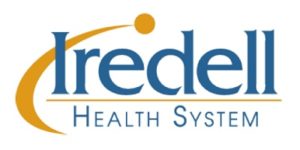
Special to IFN
Peripheral Artery Disease (PAD) affects more than 12 million Americans. In fact, one in five people over the age of 60 is living with PAD.
September is PAD Awareness Month, and the Iredell Wound Care & Hyperbaric Center is aiming to educate others on this life-altering condition.
PAD increases the risks of hard-to-heal wounds by obstructing circulation to the leg and is a serious circulatory condition in which the arteries that supply blood throughout the body become completely or partially blocked. This blockage is caused by fatty plaque deposits that harden arteries, called atherosclerosis, and significantly impair blood flow. The most common type is lower-extremity PAD, where there is a reduction in blood flow to the legs and feet. When left untreated, PAD can lead to gangrene or even limb loss.
Risk factors for PAD include smoking, advanced age, vascular disease and diabetes. Although the long-term effects of PAD are serious, an astonishing 40 percent of people with PAD do not experience any symptoms.
Iredell Would Care & Hyperbaric Center, a member of the Healogics network, provides specialized wound care and non-invasive tests, including a painless Doppler ultrasound, which evaluates blood flow in arteries near the wound, helping identify circulation issues and potential blockages. When appropriate, an ankle-brachial index (ABI) test may also be performed. This approach to early detection and assessment of PAD can help prevent complications and reduce amputation risks.
Signs & Symptoms
The following are the signs and symptoms of PAD:
• Pain or cramps in the back of the leg while walking or exercising;
• Lower legs and feet that are cool to touch or that have shiny skin;
• Legs and feet appear pale when raised and bluish/purplish when hanging down;
• Numbness or tingling in the feet and legs; and
• A sore or wound on the toes, legs or feet that does not heal
Advanced PAD results in impaired wound healing and a greater risk for limb loss. Twenty-five percent of those with advanced PAD may require an amputation within one year. People who are at risk for PAD should call the Iredell Would Care & Hyperbaric Center if they develop a wound that is slow to heal. The specialized treatment provided by the Center may accelerate healing times, boost healing rates and significantly diminish amputation risks.
LEARN MORE
For more information on recognizing PAD and treating chronic or infected wounds, contact Iredell Would Care & Hyperbaric Center, located at 1714 Davie Avenue in Statesville, or call (704) 768-0542.




Iredell Wound Care about cost me my foot several years ago due to osteomyelitis. When Iredell’s home health allowed gangrene to begin setting in, I immediately went to what was then Davis Hospital’s Wound Care Center and the Doctor there said don’t let Iredell cut my foot as Iredell was recommending. The Davis doctor believed he could save my foot. Davis Hospital’s wound care (now at Lake Norman) and their hyperbaric treatments saved my foot in tact without cutting any of it off. Remember there is another wound care center in Iredell County and second opinions can make a difference in case you run into issues as I did.